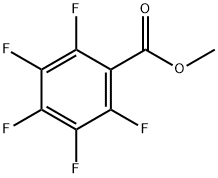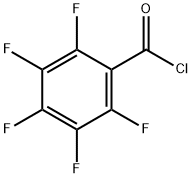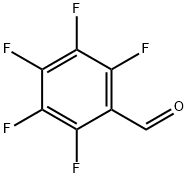hexafluorobenzene
Synonym(s):Perfluorobenzene
- CAS NO.:392-56-3
- Empirical Formula: C6F6
- Molecular Weight: 186.05
- MDL number: MFCD00000288
- EINECS: 206-876-2
- SAFETY DATA SHEET (SDS)
- Update Date: 2025-09-25 17:15:13

What is hexafluorobenzene?
Description
Hexafluorobenzene, HFB, C6F6, or perfluorobenzene is an organic, aromatic compound. In this derivative of benzene all hydrogen atoms have been replaced by fluorine atoms. The technical uses of the compound are limited, although it is recommended as a solvent in a number of photochemical reactions. In the laboratory hexafluorobenzene is used as standard in fluorine-19 NMR spectroscopy, solvent and standard in carbon-13 NMR, solvent in proton NMR, solvent when studying some parts in the infrared and solvent in ultraviolet–visible spectroscopy, as hexafluorobenzene itself hardly shows any absorbance in the UV region.
Chemical properties
colourless liquid
The Uses of hexafluorobenzene
Hexafluorobenzene is used as a solvent in photochemical reactions. It is also used as a reference compound in fluorine-19 NMR, carbon-13 NMR. It is used as a solvent in proton NMR, IR spectrum and UV-spectra. It is used as anticorrosive, antifriction and anti-tumor agents. Further, it is used as a reference molecule to investigate tissue oxygenation in vivo studies. It forms series of 1:1 complexes with naphthalene, anthracene, phenanthrene, pyrene and triphenylene.
The Uses of hexafluorobenzene
Hexafluorobenzene can be used as a standard in 19Fluorine NMR (nuclear magnetic resonance) spectroscopy and also as a solvent in 13Carbon and 1H NMR spectroscopy.
Definition
ChEBI: A member of the class of fluorobenzenes that is benzene in which all six hydrogen atom have been replaced by fluorine.
What are the applications of Application
Hexafluorobenzene can react with:
Ethyl magnesium bromide in the presence of transition metal halides to form the corresponding perfluoroarylmagnesium compound that can undergo Grignard reactions.
The sodium salt of the appropriate phenol in 1,3-dimethyl-2-imidazolidinone (DMEU) to form the corresponding hexakis(aryloxy)benzenes.
It can be used:
As a ligand to synthesize novel ruthenium(0) and osmium(0) hexafluorobenzene complexes.
As a solvent and promoter for the ring-closing metathesis (RCM) to form tetrasubstituted olefins in the presence of a ruthenium-based catalyst.
Reactions
For example, hexafluorobenzene adds chlorine quite readily under rather mild conditions to give hexachlorohexafluorocyclohexane. The catalytic reduction of hexafluorobenzene with hydrogen to penta. and tetra-fluorobenzene at 300 °C, using a platinum catalyst, probably proceeds by a free-radical mechanism. Although the addition of chlorine to hexafluorobenzene is an example of a free-radical addition reaction, the reduction of hexafluorobenzene with hydrogen is classified as a freeradical substitution reaction.
One of the earliest and, perhaps, most complicated reactions of hexafluorobenzene is one reported by Desirant. This interesting reaction, whic h is the only example of a high· temperature (above 300°C) reaction of hexafluorobenzene reported to date, involves the pyrolysis of the molecule in a platinum reactor at 850°C. Among the many products produced in this reaction , octafluorotoluene and decafluorobiphenyl were identified. This highly complex reaction probably could also be classified, in some respects, as a free-radical substitution reaction. There is also some less direct evidence that hightemperature reactions of hexafluorobe nzene do occur. In the synthesis of hexafluorobenzene by the pyrolysis of tribromofluoromethane, bromopentafluorobenzene is a signifi'cant by-product. Lesser amounts of higher brominated fluorocarbons are formed as well, along with copious quantities of bromine. This rather complex reaction is illustrated below.
CFBr3--630-640℃-->C6F6+Br2+C6F5Br+C6F4Br2+etc.
General Description
Hexafluorobenzene was repoted to be a sensitive 19F NMR indicator of tumor oxygenation. Rotational Raman spectra of hexafluorobenzenehas been studied under high resolution using a single mode argon laser as the exciting source. Hexafluorobenzene in the gas phase reacts spontaneously with lithium amalgam, to give a solid and intimate mixture of lithium fluoride and elemental polymeric carbon with a small amount of superstoichiometric lithium. Hexafluorobenzene forms series of 1:1 complexes with naphthalene, anthracene,phenanthrene, pyrene and triphenylene.
Hazard
Toxic by inhalation. Combustible.
Synthesis
The direct synthesis of hexafluorobenzene from benzene and fluorine is not possible. The synthetic route proceeds via the reaction of alkali-fluorides with halogenated benzene:
C6Cl6 + 6 KF → C6F6 + 6 KCl
Purification Methods
Main impurities are incompletely fluorinated benzenes. Purify it by standing in contact with oleum for 4hours at room temperature, repeating until the oleum does not become coloured. Wash it several times with water, then dry it with P2O5. Finally purify it by repeated fractional crystallisation. [Beilstein 5 III 523, 5 IV 640.]
Properties of hexafluorobenzene
| Melting point: | 3.7-4.1 °C (lit.) |
| Boiling point: | 80-82 °C (lit.) |
| Density | 1.612 g/mL at 25 °C (lit.) |
| refractive index | n |
| Flash point: | 50 °F |
| storage temp. | Sealed in dry,Room Temperature |
| form | Liquid |
| color | Clear colorless to slightly yellow |
| Specific Gravity | 1.612 |
| Water Solubility | Immiscible with water. |
| Merck | 14,4686 |
| BRN | 1683438 |
| Dielectric constant | 2.0499999999999998 |
| Stability: | Stable. Incompatible with strong oxidizing agents. May form complexes with transition metals which can explode when heated. Highly flammable. |
| CAS DataBase Reference | 392-56-3(CAS DataBase Reference) |
| NIST Chemistry Reference | Benzene, hexafluoro-(392-56-3) |
| EPA Substance Registry System | Benzene, hexafluoro- (392-56-3) |
Safety information for hexafluorobenzene
| Signal word | Danger |
| Pictogram(s) |
 Flame Flammables GHS02 |
| GHS Hazard Statements |
H225:Flammable liquids |
| Precautionary Statement Codes |
P210:Keep away from heat/sparks/open flames/hot surfaces. — No smoking. P233:Keep container tightly closed. P240:Ground/bond container and receiving equipment. P241:Use explosion-proof electrical/ventilating/lighting/…/equipment. P242:Use only non-sparking tools. P243:Take precautionary measures against static discharge. |
Computed Descriptors for hexafluorobenzene
New Products
BOC-L-4-HYDROXYPROLINE 2-nitro 3-hydroxy pyridine 2,6-Dichloropyridin-4-amine 2,3 Diamino pyridine 5-Iodo-2-(1-methylethyl)-3(2H)-pyridazinone 1-Azetidinecarboxylic acid, 3-[(3S)-1-(trans-3-carboxy-3-methylcyclobutyl)-3-piperidinyl]-, 1-(1,1-dimethylethyl) ester Tert-Butyl N-[3-(dimethylcarbamoyl)prop-2-en-1-yl]carbamate 1-(difluoromethyl)-N-methylcyclobutan-1-amine 2-(4-Methyl-1,2,5-oxadiazol-3-yl)-1H-benzimidazole 6-(4-iodophenyl)-1-oxa-6-azaspiro[3.3]he Trimethyl(phenylthio)silane Polycaprolactone(2000)-PEG(20000)-Polycaprolactone(2000) Diacrylate Diethylene Glycol Monoethyl Ether, PolyoxyethyleneOleylCetylEtherSulfosuccinate Ascorbyl Tetraisopalmitate or Tetrahexyldecyl Ascorbate Castor Oil, Ethoxylated, Cremophor EL or PEG-35 Castor Oil Tween 20 or Polysorbate 20 Acetone-d6 (R)-2-Mercaptobutanoic acid 3-iodo-1H-pyrazolo[3,4-d]pyrimidin-4-amine 3-(naphthalen-1-ylsulfonyl)-1H-indazol-5-amine methyl 5-amino-3-(1,1-dioxidotetrahydro-2H-1,2-thiazin-2-yl)-2-fluorobenzoate 7-methoxy-8-(2-morpholinoethoxy)-4-((3,4,5-trimethoxyphenyl)amino)benzo[g]quinoline-3-carbonitrile Dimethylaluminum isopropoxideRelated products of tetrahydrofuran








You may like
-
 Hexafluorobenzene 98% CAS 392-56-3View Details
Hexafluorobenzene 98% CAS 392-56-3View Details
392-56-3 -
 Hexafluorobenzene CAS 392-56-3View Details
Hexafluorobenzene CAS 392-56-3View Details
392-56-3 -
 Hexafluorobenzene, 99% CAS 392-56-3View Details
Hexafluorobenzene, 99% CAS 392-56-3View Details
392-56-3 -
 Hexafluorobenzene CAS 392-56-3View Details
Hexafluorobenzene CAS 392-56-3View Details
392-56-3 -
 Hexafluorobenzene CAS 392-56-3View Details
Hexafluorobenzene CAS 392-56-3View Details
392-56-3 -
 5721-91-5 98%View Details
5721-91-5 98%View Details
5721-91-5 -
 Calcium 11% clear solution 98%View Details
Calcium 11% clear solution 98%View Details -
 16455-61-1 98%View Details
16455-61-1 98%View Details
16455-61-1
